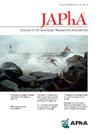Pharmacy closures and the expansion of pharmacy deserts in Ohio: A 2021–2024 analysis
IF 2.5
4区 医学
Q3 PHARMACOLOGY & PHARMACY
Journal of the American Pharmacists Association
Pub Date : 2025-05-30
DOI:10.1016/j.japh.2025.102422
引用次数: 0
Abstract
Background
The financial implications of the pandemic, the continuous decline in reimbursement rates, and the rise of online pharmacies have contributed to the closure of many pharmacies in the United States, turning more and more neighborhoods into pharmacy deserts.
Objective
We sought to assess the trends in pharmacy closures in Ohio from 2021 to 2024 and evaluate the characteristics of neighborhoods that have become pharmacy deserts.
Methods
This cross-sectional study utilized pharmacy license data from the Ohio Board of Pharmacy to evaluate census-tract level pharmacy closures and pharmacy deserts in Ohio. In total, 2206 and 1854 pharmacies were included in the analysis for 2021 and 2024, respectively. The Ohio Opportunity Index (OOI), the Digital Divide Index (DDI), and Health Professional Shortage Area status were assessed relative to pharmacy desert status.
Results
Among 3168 census tracts in Ohio, pharmacy deserts increased from 106 in 2021 to 139 in 2024. Large-chain pharmacies accounted for the vast majority (n = 309; 62.3%) of the 496 pharmacy closures. Of note, pharmacy deserts had a higher proportion of non-Hispanic Black individuals (pharmacy deserts: 40.6%, interquartile range [IQR] 8.8–77.9 vs. nonpharmacy deserts: 3.5%, IQR 0.7–15.2). Moreover, census tracts designated as pharmacy deserts had lower OOI (adjusted odds ratio [aOR] 4.46, 95% confidence interval [CI] 2.17-9.65) and higher DDI (aOR 2.08, 95%CI 1.08–4.18; P = 0.033) compared with nonpharmacy desert tracts.
Conclusion
The number of pharmacy deserts in Ohio has been increasing in recent years, particularly affecting communities with less opportunity and limited broadband access, thus exacerbating existent inequalities regarding access to pharmacy services.
俄亥俄州药房关闭和药房沙漠扩张:2021-2024年分析。
背景:疫情对财务的影响、报销率的持续下降以及网上药店的兴起,导致美国许多药店关闭,使越来越多的社区成为药店沙漠。目的:我们试图评估2021年至2024年俄亥俄州药房关闭的趋势,并评估已成为药房沙漠的社区的特征。方法:本横断面研究利用俄亥俄州药学委员会的药房许可数据来评估俄亥俄州普查区水平的药房关闭和药房沙漠。2021年和2024年共有2206家和1854家药店被纳入分析。对俄亥俄州机会指数(OOI)、数字鸿沟指数(DDI)和卫生专业人员短缺地区状况进行了相对于药房沙漠状况的评估。结果:在俄亥俄州3168个人口普查区中,药房沙漠从2021年的106个增加到2024年的139个。大型连锁药店占绝大多数(n=309;496家药店关闭中有62.3%)。值得注意的是,药房沙漠中非西班牙裔黑人的比例更高(药房沙漠:40.6%,IQR 8.8-77.9 vs.非药房沙漠:3.5%,IQR 0.7-15.2)。此外,被指定为药房沙漠的人口普查区OOI较低(aOR 4.46, 95%CI 2.17 ~ 9.65), DDI较高(aOR 2.08, 95%CI 1.08 ~ 4.18);P =0.033)。结论:近年来,俄亥俄州的药房沙漠数量不断增加,特别是影响到机会较少和宽带接入有限的社区,从而加剧了现有的药房服务获取不平等。
本文章由计算机程序翻译,如有差异,请以英文原文为准。
求助全文
约1分钟内获得全文
求助全文
来源期刊
CiteScore
3.30
自引率
14.30%
发文量
336
审稿时长
46 days
期刊介绍:
The Journal of the American Pharmacists Association is the official peer-reviewed journal of the American Pharmacists Association (APhA), providing information on pharmaceutical care, drug therapy, diseases and other health issues, trends in pharmacy practice and therapeutics, informed opinion, and original research. JAPhA publishes original research, reviews, experiences, and opinion articles that link science to contemporary pharmacy practice to improve patient care.

 求助内容:
求助内容: 应助结果提醒方式:
应助结果提醒方式:


